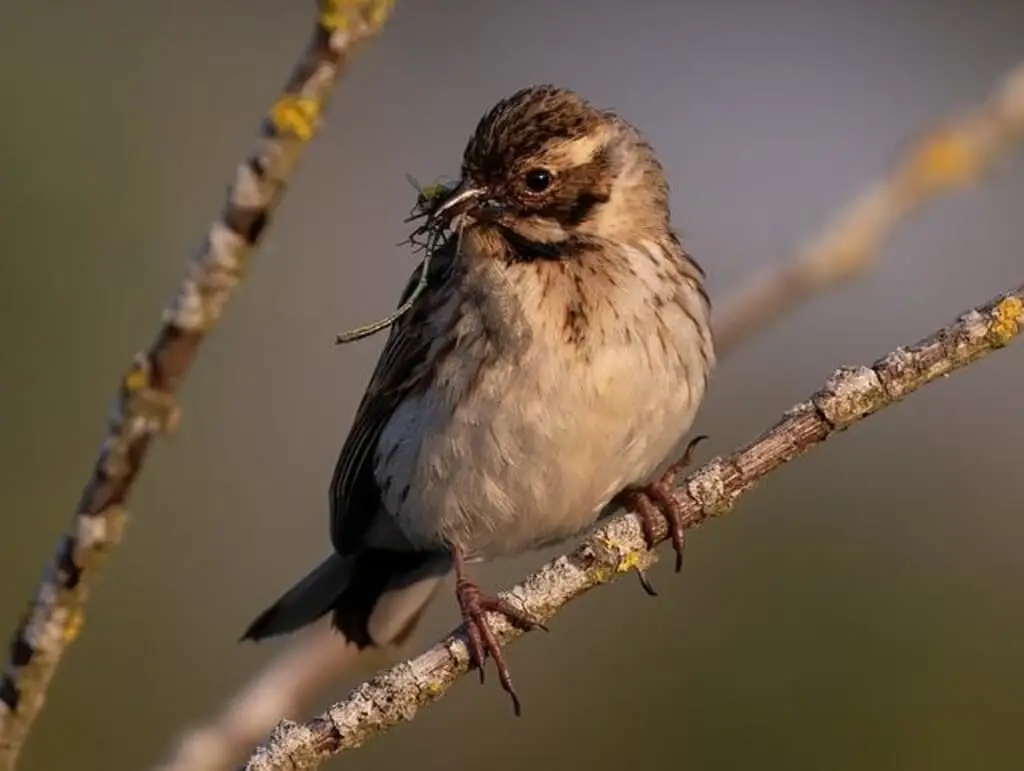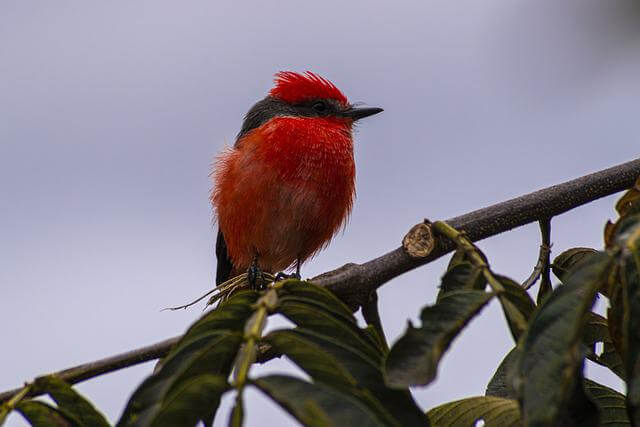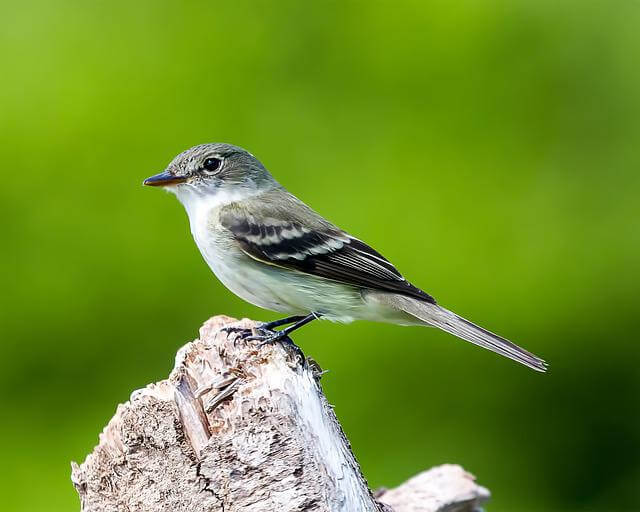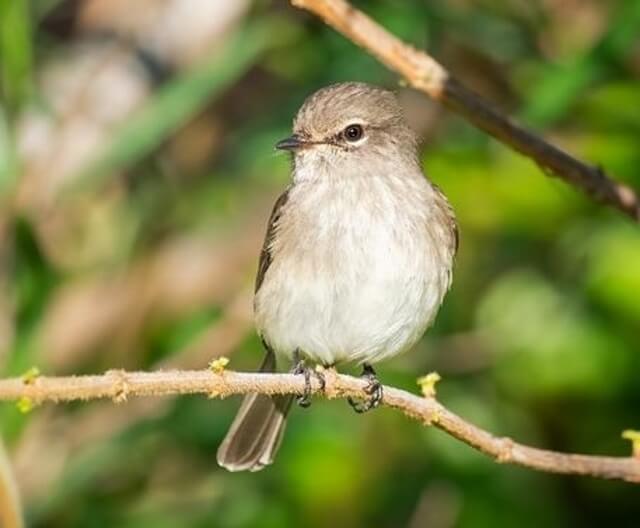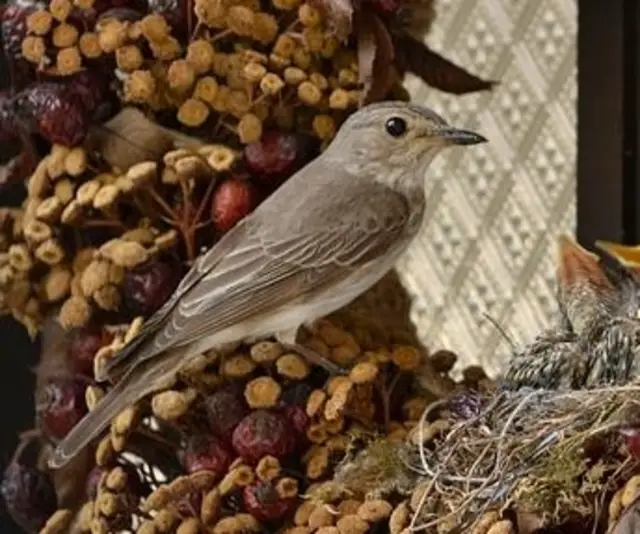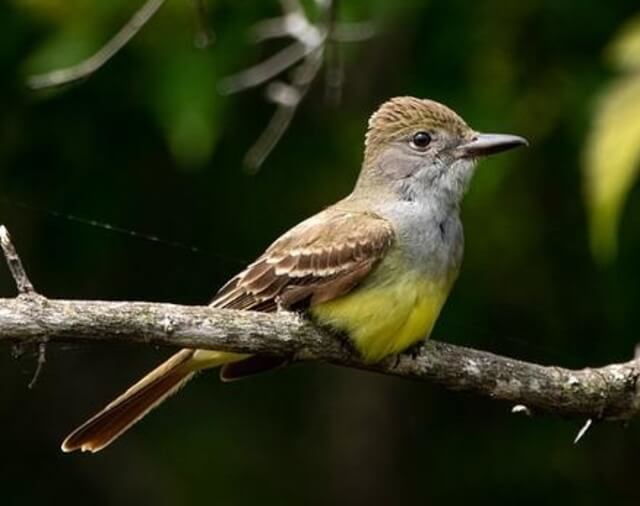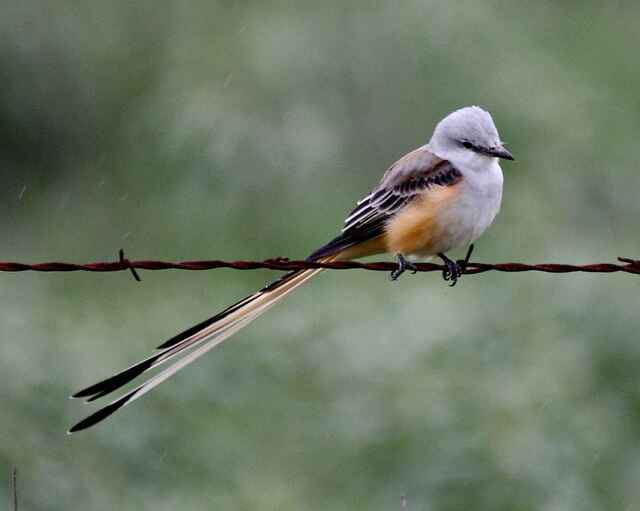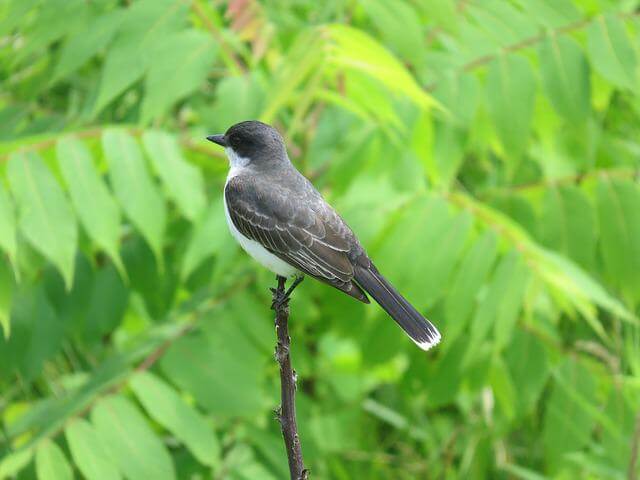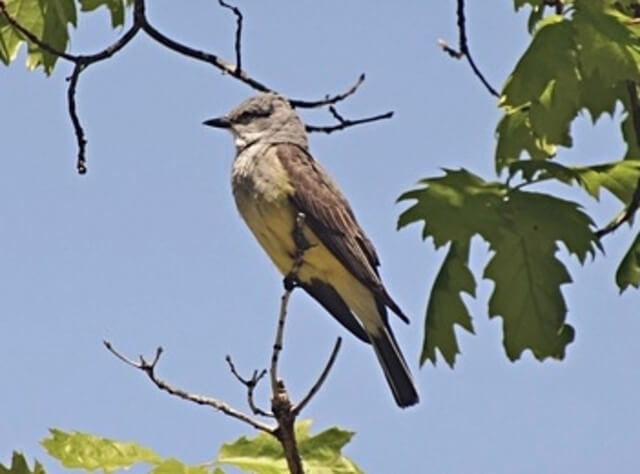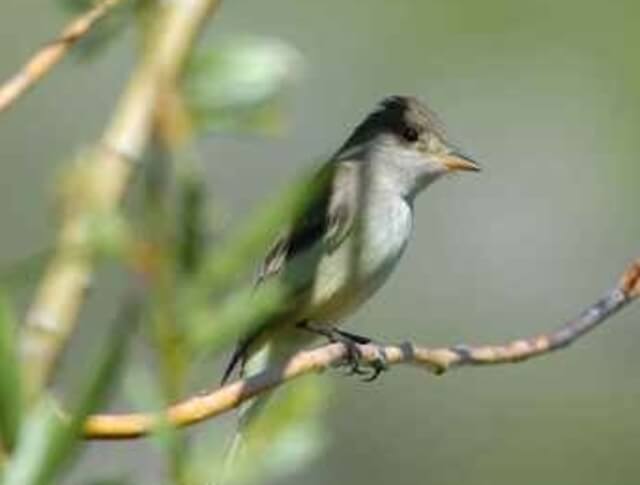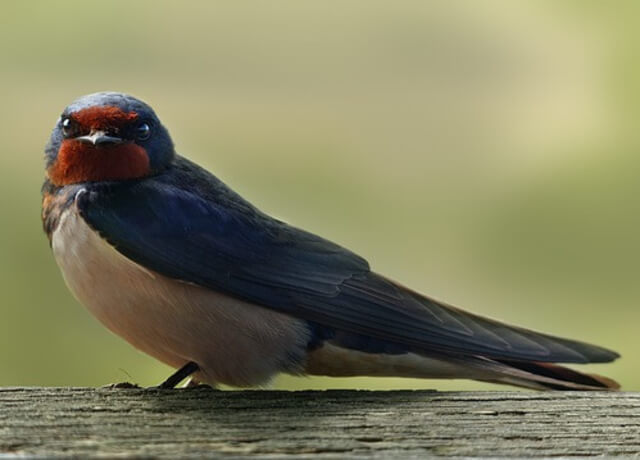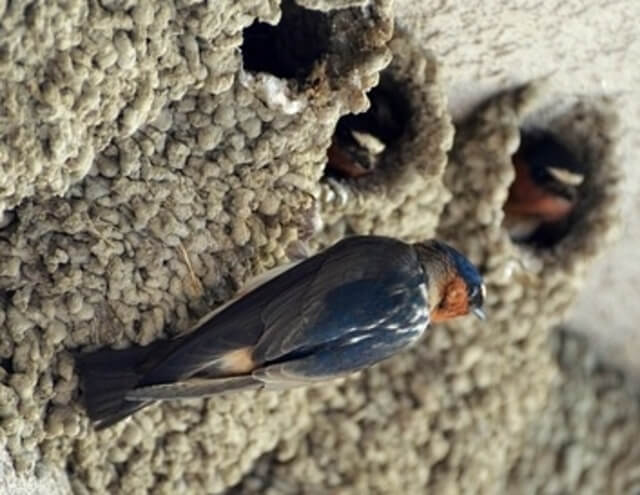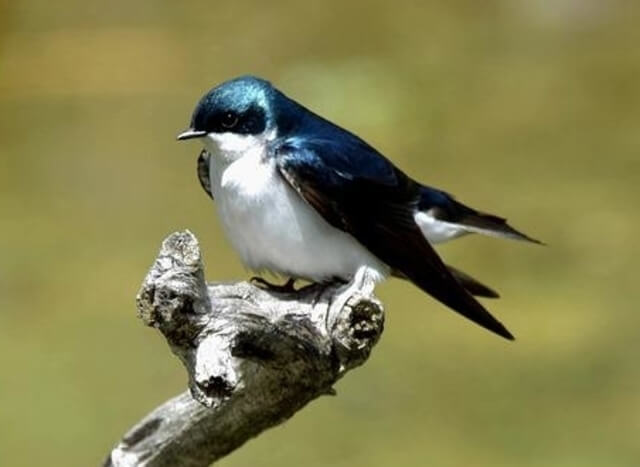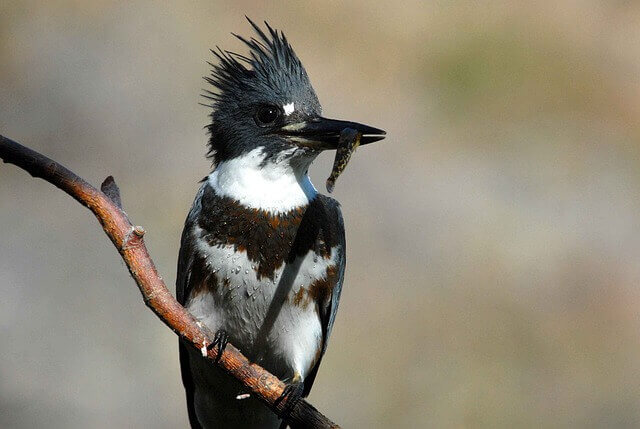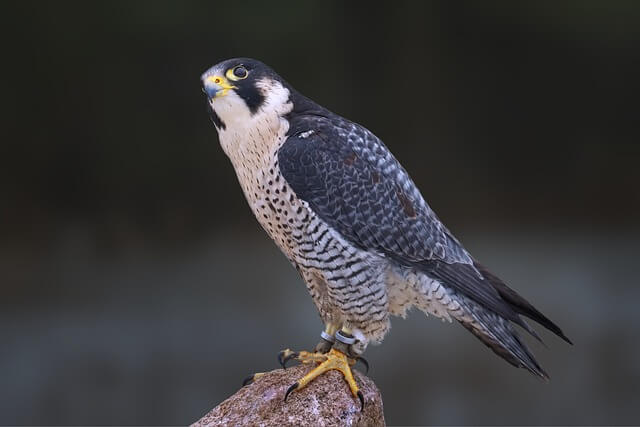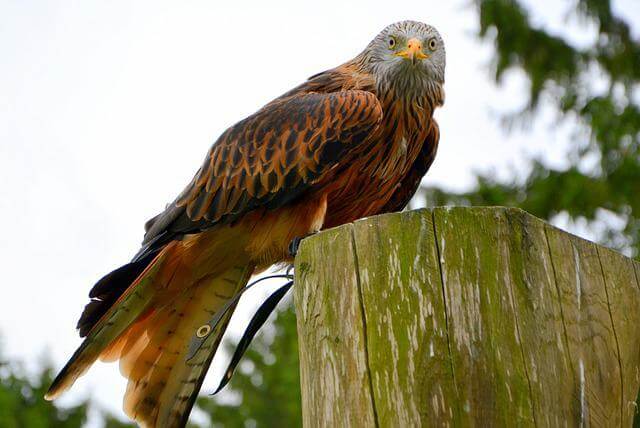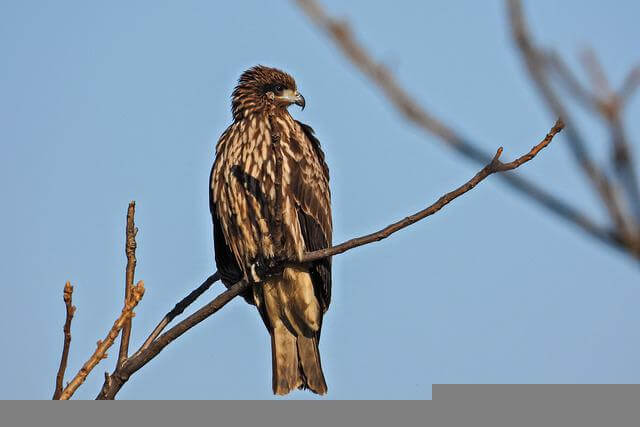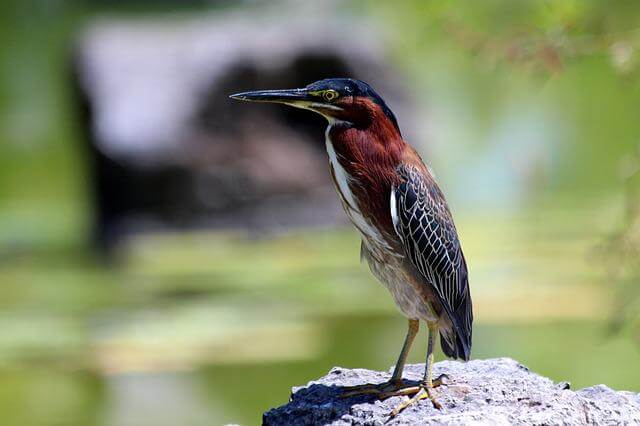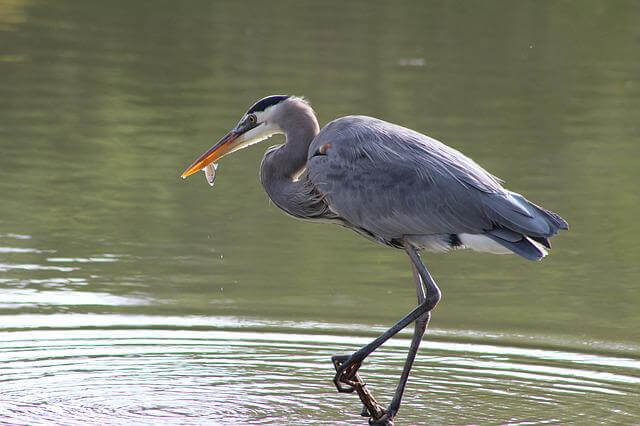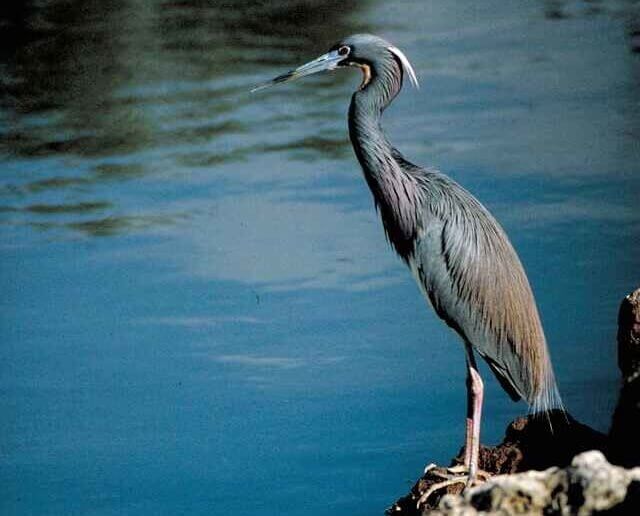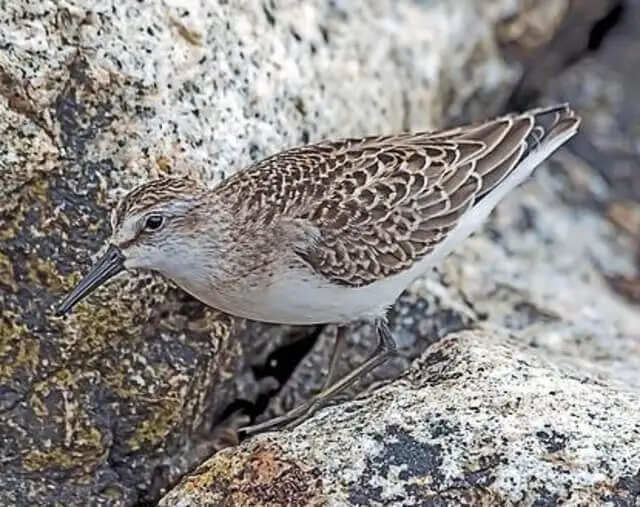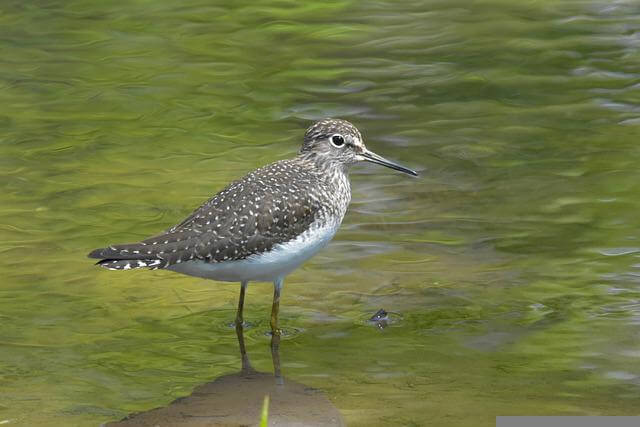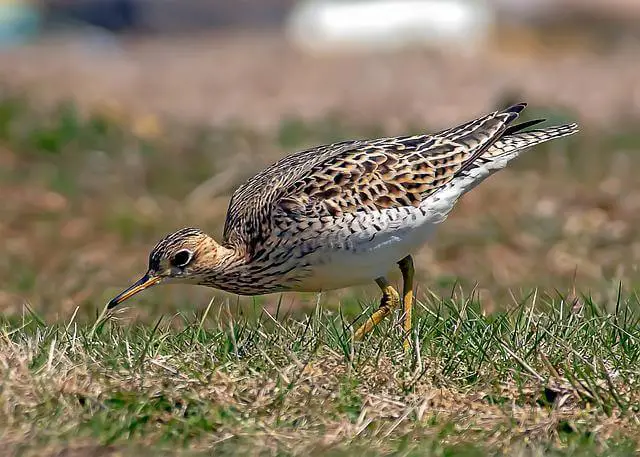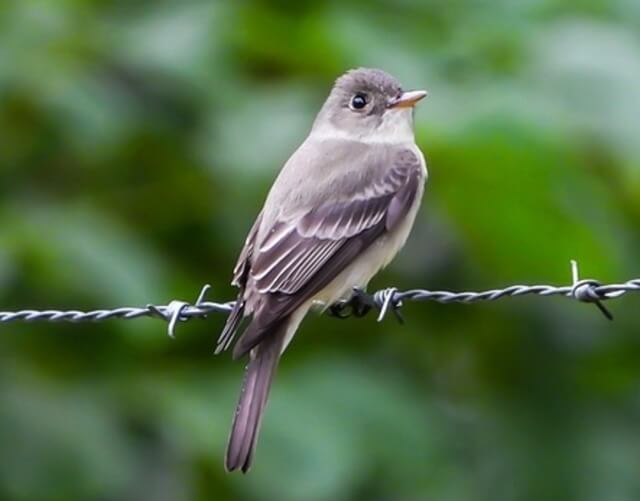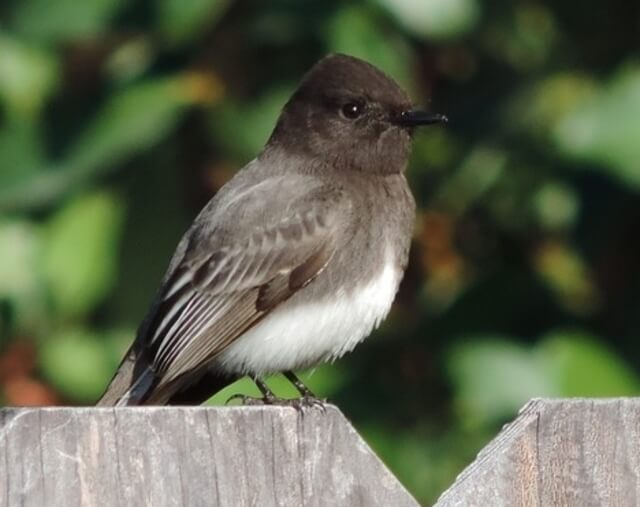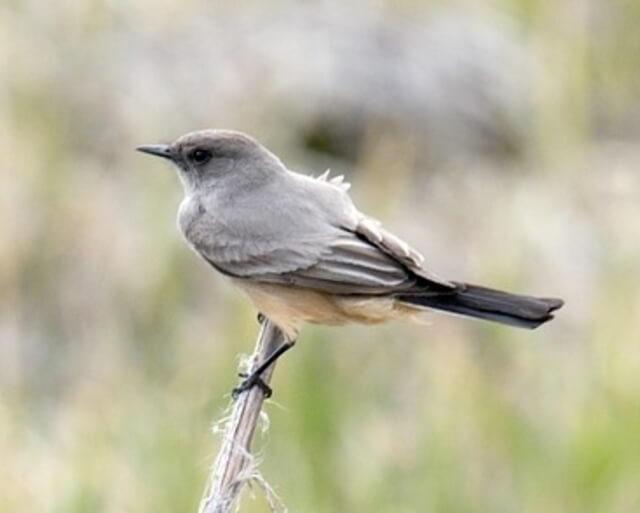Ever watched a dragonfly zip through the air, dodging and weaving like a tiny acrobat? It seems unstoppable—until the right bird locks onto its target. From lightning-fast swallows to stealthy herons, many birds have mastered the art of snatching dragonflies mid-flight.
In this list, you’ll discover 29 birds that eat dragonflies and how they pull off these incredible aerial hunts. Keep reading—you might be surprised by some of the predators on this list!
Table of Contents
- 1 Why Birds Hunt Dragonflies
- 2 Birds That Eat Dragonflies
- 2.1 Vermilion Flycatcher
- 2.2 Alder Flycatcher
- 2.3 Dusky Flycatcher
- 2.4 Gray Flycatcher
- 2.5 Great Crested Flycatcher
- 2.6 Scissor-tailed Flycatcher
- 2.7 Gray Kingbird
- 2.8 Eastern Kingbird
- 2.9 Western Kingbird
- 2.10 Willow Flycatcher
- 2.11 Barn Swallow
- 2.12 Cliff Swallow
- 2.13 Tree Swallow
- 2.14 Belted Kingfisher
- 2.15 Merlin Falcon
- 2.16 Peregrine Falcon
- 2.17 Red Kite
- 2.18 Black Kite
- 2.19 American Green Heron
- 2.20 Great Blue Heron
- 2.21 Little Blue Heron
- 2.22 Semipalmated Sandpiper
- 2.23 Solitary Sandpiper
- 2.24 Spotted Sandpiper
- 2.25 Upland Sandpiper
- 2.26 Eastern Wood-Pewee
- 2.27 Black Phoebe
- 2.28 Eastern Phoebe
- 2.29 Say’s Phoebe
- 3 Conclusion
- 4 Author
Why Birds Hunt Dragonflies
Dragonflies are more than just fast-flying insects—they’re also a valuable food source for many bird species. Birds that eat dragonflies do so for several key reasons:
- Packed with Nutrition – Dragonflies provide an excellent source of protein and hydration, making them a great meal for birds that rely on insects to fuel their energy needs.
- Abundant in Various Habitats – Found near lakes, rivers, marshes, and fields, dragonflies are widespread, giving birds plenty of opportunities to hunt them.
- Quick and Skillful Hunters – Birds that catch dragonflies are often aerial acrobats themselves. Some snatch them mid-air with precision, while others wait for them to land before striking.
This natural food chain plays a crucial role in balancing ecosystems, ensuring that insect populations remain in check while providing nourishment for birds that rely on them.
Birds That Eat Dragonflies
Vermilion Flycatcher
The Vermilion Flycatcher (Pyrocephalus rubinus) is a small, vibrant bird found across North America, from southwestern Canada to northern Mexico. It thrives in open woodlands and riparian corridors, where it showcases impressive hunting abilities. The flycatcher feeds on a variety of flying insects, including dragonflies and moths, which it catches midair with remarkable precision. Perched on high branches or wires, it scans its surroundings before swooping down to capture its prey.
With its bright red plumage and agile flight, the Vermilion Flycatcher plays an essential role in controlling insect populations in its habitat. Its hunting technique, combined with its striking appearance, makes it a fascinating species to observe. This bird’s ability to effectively hunt and contribute to the ecosystem highlights its significance in maintaining balance within its environment.
Alder Flycatcher
The Alder Flycatcher (Empidonax alnorum) is a small, elusive bird that can be found in wetland areas across North America, particularly in the northern United States and southern Canada. Preferring dense, shrubby habitats near rivers, streams, and wetlands, this flycatcher hunts primarily by sitting on low perches and darting out to snatch flying insects such as mosquitoes and midges. Its methodical approach to hunting makes it a skillful predator in its preferred environment.
With its subtle olive-brown plumage and distinctive call, the Alder Flycatcher can be hard to spot, but its feeding habits play an important role in controlling insect populations. By consuming a variety of small flying insects, it helps maintain a healthy balance in its wetland ecosystem. The Alder Flycatcher is a perfect example of a bird that contributes to the biodiversity and overall health of its habitat.
Dusky Flycatcher
The Dusky Flycatcher (Empidonax oberholseri) is a small, solitary bird that inhabits coniferous forests across western North America, from southern Canada to the northern United States. Preferring mixed woodlands and edges near streams or moist environments, this flycatcher is known for its quick and erratic flight as it catches small insects like flies and beetles midair. It often perches low, darting out to catch prey, then returns to a favorite perch to rest before hunting again.
This bird’s understated plumage, typically gray-brown with a slightly lighter belly, helps it blend into the environment. Its call is a sharp, buzzy note that is often the first clue to its presence. The Dusky Flycatcher plays an important role in controlling insect populations, especially in areas with dense vegetation, where its small size and agile hunting methods are well-suited for catching insects that thrive in such habitats.
Gray Flycatcher
The Gray Flycatcher (Empidonax wrightii) is a small, nondescript bird found across the arid regions of the southwestern United States. Preferring open woodlands, scrublands, and the edges of deserts, this flycatcher uses its keen eyesight and swift, darting flight to snatch flying insects like moths, beetles, and ants. It often perches on low, horizontal branches, watching for prey to fly within range before making a quick attack.
Characterized by its grayish plumage, the Gray Flycatcher has a subtle, yet distinctive call that often gives it away in its dry, open habitat. Despite its unremarkable appearance, it plays a significant ecological role by helping to control the populations of insects that inhabit its desert and scrub environments. Its ability to catch a variety of insects makes it an important part of the food web in these areas.
Great Crested Flycatcher
The Great Crested Flycatcher (Myiarchus crinitus) is a large and striking bird found in open woodlands and forests across eastern North America. With its bold yellow belly, brownish back, and distinctive crest, it stands out among other flycatchers. The Great Crested Flycatcher is known for its loud, raspy call and its hunting style, which involves perching on high branches to survey the area for prey. It specializes in catching insects, including dragonflies, beetles, and moths, in mid-flight.
This flycatcher is also known for its ability to catch larger prey, sometimes even small reptiles or amphibians. It often nests in tree cavities, where it lays several eggs and raises its young. The Great Crested Flycatcher plays an important role in controlling insect populations in its forest habitat, contributing to the overall health and balance of the ecosystem.
Scissor-tailed Flycatcher
The Scissor-tailed Flycatcher (Tyrannus forficatus) is a striking bird with long, forked tail feathers, found in open areas such as grasslands, pastures, and agricultural fields across the central United States. It is particularly known for its graceful aerial maneuvers as it hunts flying insects like dragonflies, beetles, and moths. The Scissor-tailed Flycatcher perches on high wires or treetops, waiting for insects to fly within range before swooping down to catch them.
This bird’s long tail is not only a defining feature but also an advantage in flight, helping it to maneuver with precision while hunting. It has a distinctive, melodic call and is a common sight in the summer months in its range. By preying on a variety of flying insects, the Scissor-tailed Flycatcher plays a key role in managing insect populations, especially in agricultural areas.
Gray Kingbird
The Gray Kingbird (Tyrannus dominicensis) is a medium-sized flycatcher found in coastal regions and tropical areas of the southeastern United States, the Caribbean, and Central America. Known for its sharp, aggressive hunting style, the Gray Kingbird often perches on low branches or utility wires near the coast, waiting for insects such as flies and beetles to fly by. It is also known to catch larger prey, including small lizards and even other birds, with impressive speed.
The Gray Kingbird’s striking gray plumage and black mask make it easy to identify, especially when perched in its favored coastal habitats. It often engages in aerial chases, diving and swooping to capture prey mid-flight. Its ability to thrive in both tropical and subtropical regions allows it to play a crucial role in controlling insect populations across a wide range of environments.
Eastern Kingbird
The Eastern Kingbird (Tyrannus tyrannus) is a bold, aggressive bird found across much of eastern North America, especially in open habitats such as fields, meadows, and the edges of woodlands. This flycatcher is highly territorial and uses its sharp, forceful calls to defend its space from other birds. The Eastern Kingbird hunts by perching on low branches or fences, scanning the area for flying insects such as bees, wasps, and flies, and then swooping down to capture them in mid-air.
The Eastern Kingbird has a distinctive black head, white belly, and dark back, making it easy to identify when perched or in flight. Its aggressive nature and skilled hunting abilities make it a top predator in its habitat, playing a vital role in controlling insect populations. By feeding on a wide variety of insects, it helps maintain balance in its ecosystem.
Western Kingbird
The Western Kingbird (Tyrannus verticalis) is a brightly colored flycatcher found in open areas such as grasslands, pastures, and desert edges across the western United States and parts of Canada. With its distinctive yellow belly and grayish back, it is easily identifiable. The Western Kingbird hunts by perching on high branches or utility poles, where it waits for insects such as flies, beetles, and dragonflies to fly within reach, then swoops down to capture them.
Known for its high-pitched, sharp calls, the Western Kingbird is a bold and active hunter. It plays an important role in controlling the populations of insects that thrive in its arid and open habitats. Its ability to capture a wide range of flying insects helps maintain the balance of the ecosystems it inhabits, especially in agricultural areas.
Willow Flycatcher
The Willow Flycatcher (Empidonax traillii) is a small, delicate bird that can be found in riparian habitats across North America, from southern Canada to the western United States. Preferring wetland areas, dense shrubs, and willows, this flycatcher hunts insects such as flies, moths, and beetles by darting out from a perch to catch them mid-flight. It is particularly skilled at hunting near water, where its prey is abundant.
This bird is often difficult to spot due to its cryptic plumage, which is typically olive-brown with a pale underside. Its distinctive, buzzy call is often the best indicator of its presence in its wetland habitat. By controlling insect populations in these areas, the Willow Flycatcher plays an important role in maintaining the balance of its ecosystem.
Barn Swallow
The Barn Swallow (Hirundo rustica) is a highly agile, fast-flying bird commonly found in open fields, farmlands, and near water sources. This swallow is known for its incredible aerial acrobatics, which allow it to hunt flying insects, including dragonflies, mid-air. With a deeply forked tail and long, pointed wings, the Barn Swallow can make sharp turns and rapid dives to catch its prey. It often hunts in groups, skimming just above water surfaces where dragonflies are abundant.
Dragonflies make up a significant part of the Barn Swallow’s diet, particularly in the summer months when these insects are most active. By consuming dragonflies and other flying insects, this species helps regulate insect populations in its habitat. Its ability to capture swift, evasive prey in mid-flight highlights the swallow’s remarkable agility and precision.
Cliff Swallow
The Cliff Swallow (Petrochelidon pyrrhonota) is a colonial nesting bird found in open areas near water, often building its mud nests under bridges, cliffs, and eaves. This species is an expert aerial hunter, preying on flying insects such as dragonflies, which it catches while darting through the sky in rapid, coordinated flights. Cliff Swallows often hunt in large flocks, taking advantage of insect swarms near lakes, rivers, and wetlands.
Dragonflies are a key prey item for Cliff Swallows, especially during breeding season when adults need to provide high-energy food for their young. Their hunting efficiency is enhanced by their ability to track fast-moving prey while flying at high speeds. By feeding on dragonflies and other flying insects, Cliff Swallows play an important role in maintaining ecological balance in their wetland and grassland habitats.
Tree Swallow
The Tree Swallow (Tachycineta bicolor) is a sleek, iridescent blue-green bird that thrives in open spaces near lakes, marshes, and rivers. As an expert aerial forager, it captures a variety of flying insects, including dragonflies, in mid-air. This species relies on keen eyesight and rapid, twisting flight maneuvers to track and catch prey, often skimming just above water surfaces where dragonflies hover.
Dragonflies are particularly valuable to Tree Swallows, providing a rich source of protein and energy for both adults and their growing chicks. Their hunting patterns shift with seasonal insect availability, but dragonflies remain a consistent part of their diet in summer months. By preying on dragonflies, Tree Swallows contribute to the natural regulation of insect populations in wetland ecosystems.
Belted Kingfisher
The Belted Kingfisher (Megaceryle alcyon) is a striking bird commonly found near rivers, lakes, and coastal waters. While it primarily preys on fish, it also consumes large aquatic insects, including dragonflies. Perching on branches overlooking the water, the kingfisher watches for movement before diving with impressive speed to snatch prey from the surface.
Dragonflies often fall victim to the Belted Kingfisher when they rest too close to the water’s edge. While not a primary food source, dragonflies provide an additional dietary supplement, especially for young kingfishers learning to hunt. By consuming both fish and insects, this bird helps maintain balance within freshwater ecosystems.
Merlin Falcon
The Merlin Falcon (Falco columbarius) is a small but powerful raptor that thrives in open habitats such as grasslands, coastal areas, and forest edges. Known for its high-speed chases, the Merlin primarily hunts small birds, but it also preys on large insects, including dragonflies. This falcon often pursues dragonflies in mid-air, using its sharp eyesight and incredible speed to snatch them before they can escape.
Dragonflies are a common food source for juvenile Merlins, helping young birds develop their hunting skills before they transition to larger prey. Even adult Merlins occasionally hunt dragonflies, particularly when bird prey is scarce. Their ability to catch such agile insects showcases their exceptional aerial maneuverability and adaptability as predators.
Peregrine Falcon
The Peregrine Falcon (Falco peregrinus) is one of the fastest birds in the world, capable of reaching speeds over 240 mph in a dive. While it primarily preys on birds, it is also known to catch large insects like dragonflies, especially during migration when food sources fluctuate. Peregrines use their speed and precision to capture dragonflies mid-flight, demonstrating their unmatched aerial prowess.
Dragonflies are most frequently consumed by young Peregrines learning to hunt, as they offer a challenging but manageable target. The falcon’s ability to take down such agile insects highlights its extraordinary reflexes and eyesight. Though dragonflies make up only a small portion of its diet, Peregrine Falcons contribute to insect population control in their diverse habitats.
Red Kite
The Red Kite (Milvus milvus) is a graceful raptor known for its soaring flight and ability to scavenge as well as hunt. Found in Europe and parts of western Asia, the Red Kite preys on a variety of food sources, including small mammals, birds, and insects like dragonflies. It often hunts dragonflies over open fields and wetlands, using its keen eyesight to detect movement from above before swooping down.
Dragonflies provide a valuable food source, particularly in summer when they are abundant. The Red Kite’s agile flight allows it to pluck insects from the air with impressive accuracy. By feeding on dragonflies, this raptor plays a role in maintaining insect population dynamics within its range.
Black Kite
The Black Kite (Milvus migrans) is a widespread raptor found across Europe, Asia, Africa, and Australia. Though it primarily scavenges, it is also an opportunistic hunter that catches small animals and insects, including dragonflies. The Black Kite frequently patrols rivers and wetlands, where dragonflies are abundant, snatching them mid-air or picking them off vegetation.
Dragonflies serve as an easy and energy-rich snack, particularly for younger Black Kites still refining their hunting skills. This raptor’s adaptability in diet allows it to thrive in diverse environments. By preying on dragonflies and other insects, the Black Kite helps maintain a natural balance in insect populations.
American Green Heron
The American Green Heron (Butorides virescens) is a small but skillful hunter that thrives in wetlands, marshes, and slow-moving streams. While its primary diet consists of fish, amphibians, and crustaceans, it also preys on dragonflies. Green Herons have been observed stalking dragonflies resting on reeds or hovering near the water, striking with a lightning-fast jab of their sharp beak.
Dragonflies provide an additional food source, particularly for juvenile herons learning to hunt. This species’ patient and stealthy hunting strategy allows it to catch a variety of prey, contributing to the ecological balance of wetland habitats. By feeding on dragonflies, Green Herons help regulate insect populations in aquatic environments.
Great Blue Heron
The Great Blue Heron (Ardea herodias) is a large, majestic wading bird found in wetlands and along shorelines across North America. While primarily a fish-eater, it also consumes insects such as dragonflies when the opportunity arises. Great Blue Herons often catch dragonflies that skim too close to the water’s surface or land within striking distance.
Dragonflies are a seasonal supplement in the heron’s diet, particularly during the warmer months when insect activity peaks. This bird’s opportunistic feeding behavior allows it to take advantage of various food sources, maintaining balance in wetland ecosystems. By occasionally feeding on dragonflies, the Great Blue Heron indirectly helps control insect populations in its habitat.
Little Blue Heron
The Little Blue Heron (Egretta caerulea) is a slender wading bird commonly found in marshes, swamps, and shallow coastal waters. It primarily feeds on fish, crustaceans, and aquatic insects, including dragonflies. Using a slow, deliberate hunting style, the heron patiently stalks prey along the water’s edge before striking with precision. Dragonflies resting on reeds or hovering near the surface are frequent targets.
Dragonflies provide an important food source, particularly for juvenile herons still honing their hunting skills. The Little Blue Heron’s varied diet allows it to adapt to seasonal changes in prey availability. By feeding on dragonflies and other insects, it contributes to maintaining balanced wetland ecosystems.
Semipalmated Sandpiper
The Semipalmated Sandpiper (Calidris pusilla) is a small, migratory shorebird that breeds in Arctic tundra and winters along coastal mudflats. While it primarily forages for small invertebrates in wet sand and shallow water, it occasionally catches flying insects, including dragonflies, during migration stops. Quick movements and precise pecking help it snatch prey before it escapes.
Dragonflies offer an energy-rich food source, especially during long migratory journeys when the sandpiper needs to build fat reserves. Although insects are not its main diet, opportunistic feeding on dragonflies helps this bird maximize its energy intake while traveling thousands of miles between breeding and wintering grounds.
Solitary Sandpiper
The Solitary Sandpiper (Tringa solitaria) is a unique shorebird that prefers inland wetlands over coastal habitats. Unlike many sandpipers that feed in flocks, this species hunts alone, probing mud and shallow water for insects and small aquatic creatures. It often snatches dragonflies from low vegetation or plucks them from the water’s surface with quick, precise movements.
Dragonflies provide a high-protein snack, particularly during migration when the sandpiper needs extra energy for long-distance travel. The ability to catch a wide variety of prey, including flying insects, allows the Solitary Sandpiper to thrive in diverse wetland environments. Its role as both a predator and prey species contributes to the intricate balance of wetland ecosystems.
Spotted Sandpiper
The Spotted Sandpiper (Actitis macularius) is a widespread shorebird known for its distinctive teetering motion while walking. It forages along streams, lakeshores, and mudflats, hunting a variety of invertebrates, including dragonflies. Quick reflexes and precise pecking allow it to catch dragonflies that rest on rocks, reeds, or floating vegetation.
Dragonflies offer a nutritious supplement to the sandpiper’s diet, especially during breeding season when energy demands are high. By preying on dragonflies and other insects, the Spotted Sandpiper helps regulate insect populations while maintaining its role in wetland food chains.
Upland Sandpiper
The Upland Sandpiper (Bartramia longicauda) is a grassland shorebird that prefers dry prairies over wetlands. Unlike most sandpipers, it hunts in open fields, scanning the ground and air for insects, including dragonflies. It catches dragonflies in flight with sharp, quick movements or plucks them from tall grasses where they rest.
Dragonflies are a valuable food source, providing essential nutrients for both adults and their growing chicks. The Upland Sandpiper’s insect-heavy diet makes it an important predator in grassland ecosystems, helping to naturally control insect populations while supporting its own survival.
Eastern Wood-Pewee
The Eastern Wood-Pewee (Contopus virens) is a small, grayish flycatcher found in woodlands throughout eastern North America. It is a sit-and-wait predator, perching on exposed branches and launching into the air to catch flying insects such as dragonflies. Its quick, darting flight and sharp eyesight allow it to snatch even the fastest prey mid-air.
Dragonflies make up a significant portion of the Eastern Wood-Pewee’s diet, especially in late summer when insect activity peaks. By preying on dragonflies, this flycatcher plays a crucial role in maintaining healthy insect populations in forested habitats. Its efficient hunting technique ensures a steady food supply throughout the breeding season.
Black Phoebe
The Black Phoebe (Sayornis nigricans) is a striking, black-and-white flycatcher commonly found near water sources such as rivers, ponds, and coastal cliffs. This bird relies on its keen vision to spot dragonflies and other flying insects, launching into short, acrobatic flights to capture prey in mid-air. It often returns to the same perch between hunts, a behavior typical of phoebes.
Dragonflies provide a reliable food source, particularly during warmer months when insect populations surge. The Black Phoebe’s hunting strategy allows it to efficiently target large insects, making it an effective predator in riparian and coastal environments. By controlling insect numbers, it helps maintain the balance of its ecosystem.
Eastern Phoebe
The Eastern Phoebe (Sayornis phoebe) is a hardy, adaptable flycatcher that thrives in a variety of habitats, from woodlands to urban parks. Like other phoebes, it uses a perch-and-pounce hunting method, scanning for insects such as dragonflies before launching into a swift aerial pursuit. It often targets dragonflies hovering near water sources, where food is plentiful.
Dragonflies serve as a high-protein meal that helps sustain the Eastern Phoebe during migration and breeding season. By preying on these insects, the phoebe contributes to natural insect population control. Its ability to thrive in both wild and human-altered landscapes makes it an important insect predator across its range.
Say’s Phoebe
The Say’s Phoebe (Sayornis saya) is a pale, desert-dwelling flycatcher that inhabits open grasslands and arid scrub. It relies on a perch-and-hunt strategy, watching for flying insects such as dragonflies before darting out to catch them in mid-air. Its lightweight body and rapid wingbeats allow it to make precise aerial maneuvers.
Dragonflies provide a critical food source, especially in hot, dry regions where insect diversity can be limited. Say’s Phoebe’s ability to efficiently capture dragonflies and other flying prey makes it a key insect predator in open landscapes. By feeding on dragonflies, it helps control insect populations while sustaining itself in harsh environments.
Conclusion
In conclusion, the diverse world of avian predators that feed on dragonflies highlights the intricate balance of nature. From aerial hunters like swallows to stealthy night hunters like owls, each bird species has adapted its hunting strategies to catch these agile insects.
As dragonflies play a crucial role in ecosystems by controlling insect populations, their predation by birds is a natural part of the food chain.
Through these interactions, we gain a deeper appreciation for the interconnectedness of life in the wild, where every species, no matter how small or large, plays a vital role in maintaining the delicate harmony of the natural world.

